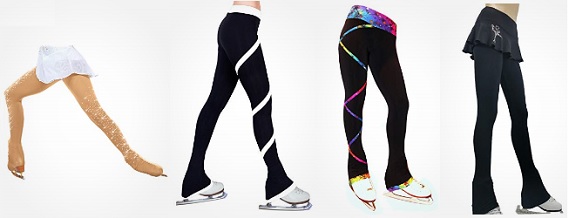Women's Ice Skating Clothing: Directory and Information Regarding Women's Ice Skating Clothing presented by Apparel Search
Women's Ice Skates Women's Shoes Women's Footwear Women's Clothes Women's Shoe Stores Women's Footwear Guide Women's Shoes Footwear Definitions
|
Welcome to the worlds greatest guide to Women's Ice Skating Clothing. Are you actually looking for Women's Ice Skating Clothing? |
Apparel Search is a leading guide to fashion, style, clothing, glam and all things relevant to apparel. We hope that you find this Women's Ice Skating Clothing page to be helpful.
Ice skating clothing has much to do with the type of skating activity that you have planned. Recreational skating on your local pond would require different clothing that if you were planning to attend an ice dance competition.
Ice dance (sometimes referred to as ice dancing) is a discipline of figure skating that historically draws from ballroom dancing. It joined the World Figure Skating Championships in 1952, and became a Winter Olympic Games medal sport in 1976. As for the other disciplines of figure skating, the clothing worn by ice dancers at ISU Championships, the Olympics, and international competitions must be "modest, dignified and appropriate for athletic competition—not garish or theatrical in design":p. 78 Rules about clothing tend to be more strict in ice dance; Juliet Newcomer from U.S. Figure Skating has speculated limits in the kind of costumes ice dancers chose were pushed farther during the 1990s and early 2000s than in the other disciplines, resulting in stricter rules. Clothing can, however, reflect the character of ice dancers' chosen music. Their costumes must not "give the effect of excessive nudity inappropriate for the discipline".
Figure skating is a sport in which individuals, duos, or groups perform on figure skates on ice. It was the first winter sport included in the Olympics, in 1908. The four Olympic disciplines are men's singles, ladies' singles, pair skating, and ice dance. Non-Olympic disciplines include synchronized skating, Theater on Ice, and four skating. From juvenile through senior-level competition, skaters generally perform two programs (short and free skating) which, depending on the discipline, may include spins, jumps, moves in the field, lifts, throw jumps, death spirals, and other elements or moves. Skaters are generally free to select their own attire, with a few restrictions. In competition, females may wear a dress, typically with matching attached briefs, and since 2004, they may also choose trousers. They may wear opaque flesh-colored leggings or tights under dresses and skirts, which may extend to cover their skates. Competition costumes vary widely, from simple designs to heavily beaded or trimmed costumes. Skaters risk a deduction if a piece of their costume falls onto the ice surface. According to current ISU regulations, costumes in competition "must be modest, dignified and appropriate for athletic competition – not garish or theatrical in design. Clothing may, however, reflect the character of the music chosen."
Women's ice hockey was added to the Winter Olympics in 1998. The clothing worn by ice hockey players is much different than the clothing worn by female figure skaters. The most important difference is the amount of protective padding. Women's ice hockey players wear team logo uniforms.
Shop for ice skates at Amazon.
If you want to be even more stylish, you should wear your favorite Women's ice skating clothing.
Apparel Search
Add Your Company
Contact Us
About Us
Advertise
News Letter
Legal
Help
Copyright © 1999-2023 Apparel Search Company.
All Rights Reserved.

